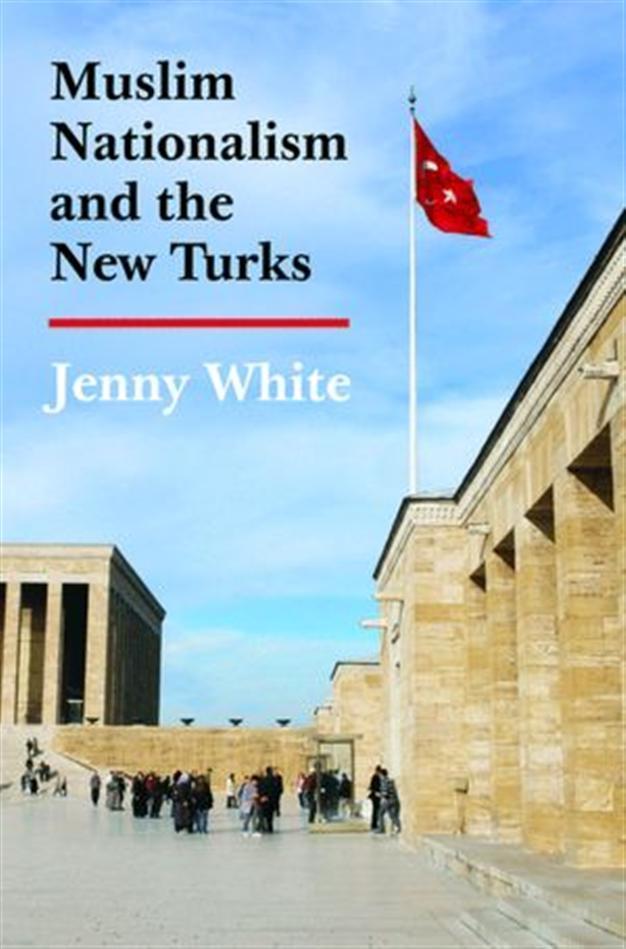Muslim Nationalism and the New Turks
William Armstrong - william.armstrong@hdn.com.tr
 ‘Muslim Nationalism and the New Turks’ by Jenny White (Princeton University Press, 2013, 40TL, pp 241)
‘Muslim Nationalism and the New Turks’ by Jenny White (Princeton University Press, 2013, 40TL, pp 241)It’s a reviewer’s job both to critique the book at hand and to detail and summarize its most salient points. It’s a tribute to Boston University anthropologist Jenny White’s excellent “Muslim Nationalism and the New Turks” that it makes the latter extremely difficult to do, simply by doing justice to the enormous complexity of Turkish society. The reader is offered no simplistic thesis, but rather a careful consideration of the forces pulling the country in multiple, often contradictory directions; this makes the book a pleasure to read but something of a nightmare to review.
The “Muslim nationalism” of the title refers to Turkey’s new hegemonic group. In contrast to the isolationist Kemalist republicans that went before, the Muslim nationalists have a looser, less blood-based definition of Turkishness, imagining a nation with more flexible Ottoman boundaries. They were profoundly shaped by the “Turkish-Islamic synthesis” that emerged in the years after the 1980 military coup, and have a powerful collective sense of identity, sometimes reinforced and sometimes contradicted by the consumerist boom that followed the opening up of the country’s economy in the 1980s. It’s also not possible to understand them without reference to what White describes as a “distinctly Turkish post-imperial sensibility” - the Ottoman past now being “romanticized and consumed uncritically.” For many Muslim nationalists, therefore, the emblematic founding moment for the Turkish nation is the conquest of Istanbul in 1453, as opposed to the declaration of the republic in 1923. Accordingly, numerous “new” public festivals and ceremonies harking back to the Islamic and Ottoman past have been introduced, often unsubtly placed at the time of traditional republican holidays.
However, Muslim nationalism is not only an inheritor of a post-imperial Ottoman sensibility, but also – inevitably - 80 years of the Kemalist state tradition and its associated neuroses. The Muslim nationalist vision is shaped by an imperial Ottoman past overlaid onto a Republican state framework, and at its worst it’s is a vision that mixes the toxic anxieties of both. This is a fact clearly demonstrated by the Turkish government’s embarrassing references to pernicious “foreign powers” being behind the Gezi Park protests that recently swept across the country. Indeed, the “new Turks” perhaps share more with the old Kemalist establishment than they might care to admit, combining a curious mixture of often contradictory ideas: the Kemalist external threat paradigm, authoritarianism, a belief in the effectiveness of social engineering, intolerance of heterodoxy, nationalist suspicion of outsiders, Turkish exceptionalism, and the patriarchal family. They also largely understand democracy “as a mandate for the winning party to impose its values.”
One of White’s central and most original sections comes when she examines the Muslim nationalists’ attitude to women. For both Muslim and secular nationalists, White says, there is a “clear link between sexual purity and national honor … [a] discursive association between the penetrability of national boundaries, female sexual vulnerability, and male sexual agency.” As the dreadful “journalist” Fatih Altaylı wrote in a 2008 column: “Maybe you are not aware of the fact that the Turkish army is also protecting what is between a woman’s legs. The Turkish army protects the borders of Turkey, and this border lies between a woman’s legs.” Ultimately, both Muslim and secular nationalists share a highly gendered understanding of the “motherland,” limiting women’s roles in essentially masculinist and militarist configurations of national identity.
White convincingly suggests that the two old monolithic “categories” of secular and Islamic nationalism actually have more in common than the chronic polarization in the country might suggest. Although the lines of demarcation are sharply drawn, they are often (unconsciously) crossed. One interpretation of the Gezi Park protests that have recently shaken Turkey is that their core is made up of a largely apolitical young generation, opposed to authoritarianism in all its forms and unmoved by the stale old dichotomy. The government’s response may have stuck rigidly to the old paradigm - casting the demonstrators as little more than antediluvian coup-nostalgic Kemalists - but many of those protesting on the streets no longer consider those old distinctions to be relevant anymore. Nevertheless, this constituency still only makes up a tiny proportion of Turkey’s population, and probably also only a small proportion of all Turkey’s youth. Whether it will be able to have any significant effect on Turkey’s future political direction is now a critical question.
Notable recent release

‘Constantinople’ by Edmondo De Amicis
(Alma Classics, $20, pp 352)










